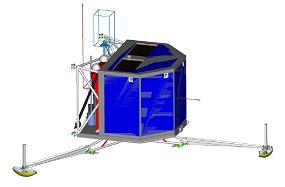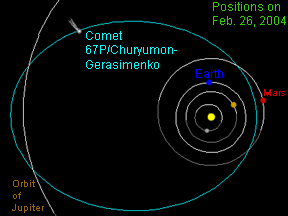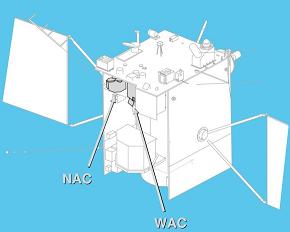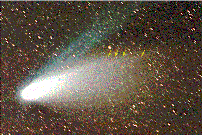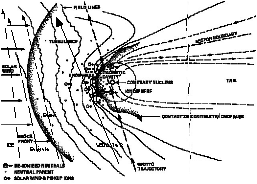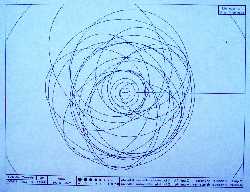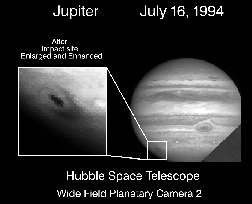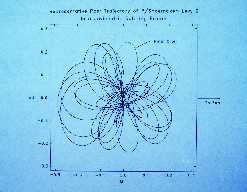The Rosetta lander.
Click on image for full size
Image courtesy NASA.
Click on image for full size
Image courtesy NASA.
Rosetta lander instruments
The Rosetta lander has many instruments that it will use to make measurements when it lands on Comet Churyumov-Gerasimenko. The instruments carried by the lander are described in detail in the table below. The instruments on the Rosetta orbiter are described on a separate page.
| Instrument | Purpose | Principal investigator |
| ALICE - Ultraviolet Imaging Spectrometer | Analyzes gases in comet's coma and tail | Dr. Alan Stern, Southwest Research Institute, USA |
| CONSERT - Comet Nucleus Sounding Experiment by Radiowave Transmission | Radio sounding, nucleus tomography - uses radio waves to probe comet's interior | Prof. Wlodek Kofman, Ecole Nationale Superieure d'Ingenieurs, France |
| COSIMA - Cometary Secondary Ion Mass Analyser | Dust mass spectrometer - chemical analysis of dust grains | Dr. Jochen Kissel, Max-Planck-Institut für Extraterrestrische Physik, Germany |
| GIADA - Grain Impact Analyser and Dust Accumulator | Dust velocity and impact measurement - number, masses, and velocities of dust grains coming from the comet | Prof. Luigi Colangeli, Osservatorio Astronomico di Capodimonte, Italy |
| MIDAS - Micro-Imaging Dust Analysis System | Micro-imaging dust analysis - physical analysis (size, shape, etc.) of dust grains | Prof. Willi Riedler, Space Research Institute, Austria |
| MIRO - Microwave Instrument for the Rosetta Orbiter | Microwave spectrometer - measures major gases and sub-surface temperature of the comet | Dr. Samuel Gulkis, Jet Propulsion Laboratory, USA |
| OSIRIS - Optical, Spectroscopic, and Infrared Remote Imaging System | Wide-angle and narrow-angle cameras | Dr. Horst Uwe Keller, Max-Planck-Institut für Aeronomie, Germany |
| ROSINA - Rosetta Orbiter Spectrometer for Ion and Neutral Analysis | Neutral gas and ion mass spectrometer - chemical analysis of comet's atmosphere | Prof. Hans Balsiger, University of Bern, Switzerland |
| RPC - Rosetta Plasma Consortium | Plasma measurements - 5 sensors measure physical properties of the nucleus, the structure of the coma, and the comet's interaction with the solar wind | Dr. Rolf Boström, Swedish Inst. of Space Physics, Sweden
Dr. James Burch, Southwest Research Institute, USA Prof. Karl-Heinz Glassmeier, Technische Universität, Germany Prof. Rickard Lundin, Swedish Institute of Space Physics, Sweden Dr. Jean-Gabriel Trotignon, LPCE/CNRS, France |
| RSI - Radio Science Investigation | Spacecraft's radio signals are used to measure the mass & density of the nucleus and to define the comet's orbit. | Dr. Martin Pätzold, Universität Köln, Germany |
| VIRTIS - Visible and Infrared Thermal Imaging Spectrometer | Maps the temperature on the surface of the nucleus & identifies gases | Dr. Angioletta Coradini, Istituto di Astrofisica Spaziale, Italy |
Last modified January 8, 2004 by Randy Russell.


